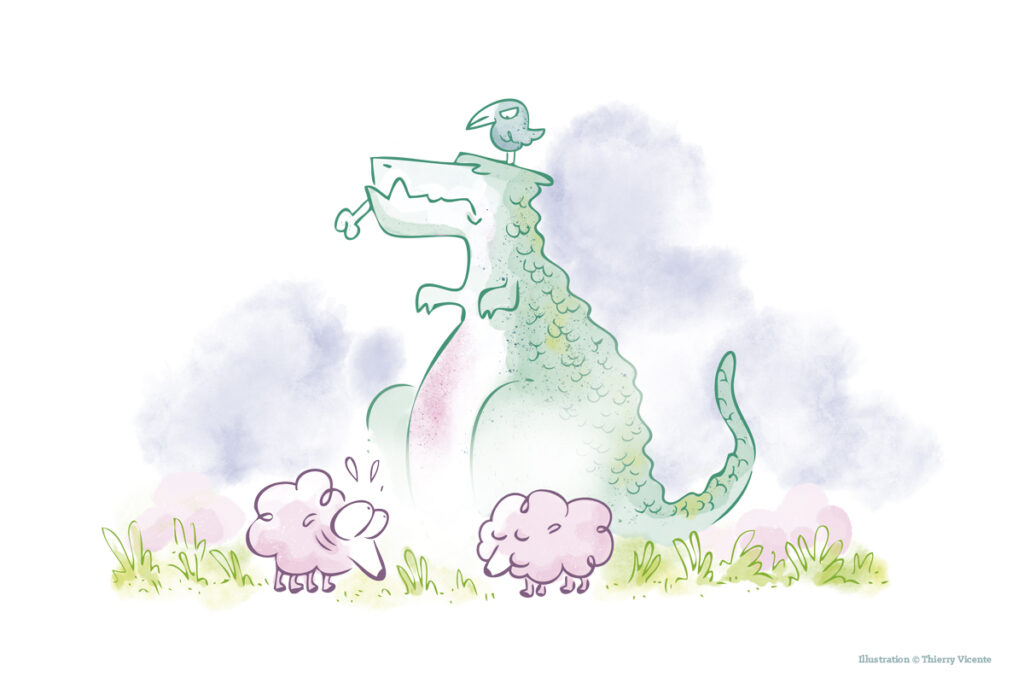[LUM#6] Cancer, the evil of rupture
In the animal kingdom, cancer is a rare occurrence. Species have always evolved to protect themselves against it. When this disease takes hold, it's because a break with the natural environment has occurred. Extraordinary longevity, increased body size, exposure to pollutants... Decoding.

Is cancer a recent disease? Let's dispel preconceived ideas. Far from being new, this worrying malignancy is as old as multicellular organisms. It originates at the very heart of our cells. At the onset of cancer, a cell is found to be out of control, proliferating anarchically, immortal. It reproduces, deaf to the warning signals of its neighbors, and may end up forming a malignant tumor or spreading throughout the body. "Cancer is not something foreign to us. It materializes a dysfunction in our own organism," explains Eric Assenat, head of the medical oncology department at CHU Saint Eloi.
The source of this loss of control is a change in genetic information. " This may be due to an error in copying, or to external factors such as smoking, radiation, viruses, bacteria or chemicals, " explains the oncologist. When mutations accumulate within a single cell, it becomes cancerous.
A strategy for every species
All multicellular living beings have built up protection against this failure over the course of their evolution. Elephants, for example, have very little such protection. A paradox. These animals are 50 to 100 times heavier than humans: their large number of cells should lead to a large number of mutations, and therefore more cancers. " In reality, elephants have evolved to avoid certain cellular diseases, including cancer, having in each of their cells nineteen copies of the gene central to resistance to this disease. If one copy is mutated, eighteen remain potentially active ", describes Michael Hochberg, ecologist and researcher at the Institut des Sciences de l'Evolution de Montpellier (Isem).
Each species has its own defense strategy against disease. Most small animals die young, before genetic abnormalities accumulate in their cells. Large animals, on the other hand, live a long time, but have developed anti-cancer protection mechanisms over the course of their evolution. As a result, " in animals living in their natural habitat, the lifetime risk of developing cancer is of the order of 1 or 2%, and to our knowledge does not exceed 5% ", summarizes Michael Hochberg.
Breaks with the natural environment
How is it, then, that the incidence of this disease can sometimes explode? "When the lifetime risk of developing cancer exceeds 5%, there is a disturbance in the ecology of the species. In animals, this happens in captive groups, in pets, in parasites, or in polluted environments ", explains Michael Hochberg (A framework for how environment contributes to cancer riskin Ecology Letters, 2017).
Abnormally long life spans, exposure to pollutants, reduced genetic capital, infection by viruses... These are all breaks with the natural environment, preventing the protective mechanisms put in place by evolution from coming into play. In zoos, the culprits are varied: contraceptives for cheetahs and tigers, carcinogenic viruses for prairie dogs, or an artificially reduced genetic capital for Tasmanian devils.
In the wild, when cancer strikes several individuals, pollutants are the obvious suspects. As in the case of Canada's white whales, contaminated by heavy metals and chemicals from the St. Lawrence. " But it's not always easy to demonstrate the link between cancer and the presence of a pollutant ," moderates Michael Hochberg. Within the same species, the risk also increases with height. " In humans, measuring 10 cm taller increases the risk of cancer by around 5% in men and 8% in women ", explains the ecologist.
Longevity
But in the final analysis, longevity is the key factor behind a large proportion of cancers. The risk increases with the number of genetic mutations at the heart of cells, and therefore with age. Laboratory mice have a 40% lifetime risk of cancer because, protected from predators, infections and viruses, they reach canonical ages of one year or more!
Mechanically, today's extraordinary human longevity makes us vulnerable to this disease. Today, 40% of Americans develop cancer during their lifetime. In France, there are 400,000 new cases every year. 150,000 people die from it, with an average age of between 60 and 70. " If cancer has become the leading cause of death, it's also because fewer people are dying from other causes ," explains Eric Assenat.
So what can we do about this break-up disease, for us humans who live in such a modified environment? We can, of course, avoid smoking, drink less alcohol, reduce our exposure to UV rays and pollutants, eat a balanced diet and keep physically active. And we can look forward to potentially revolutionary treatment prospects.
Few Paleolithic cancers
Isem ecologists Michael Hochberg and Robert Noble have developed a mathematical model to determine the incidence of cancer in our hunter-gatherer ancestors(Peto's paradox and human cancer, in The royal society publishing, 2015). Smaller, living between 30 and 40 years on average, they were not exposed to pollutants. The algorithm's verdict: the incidence of cancer in the Palaeolithic period must have been 5 to 10% on average. Or even 1% if we take into account only those individuals who lived to the age of 40.
UM podcasts are now available on your favorite platforms (Spotify, Deezer, Apple podcasts, Amazon Music...).